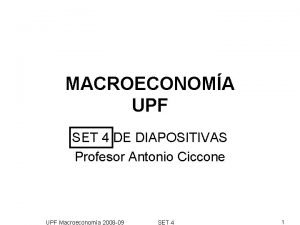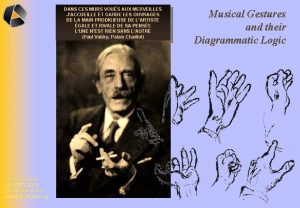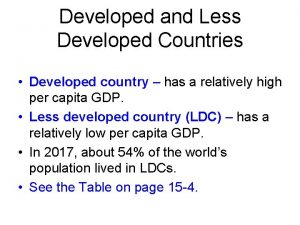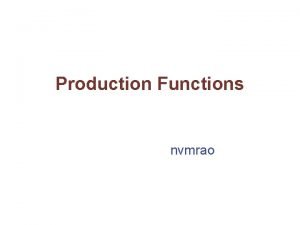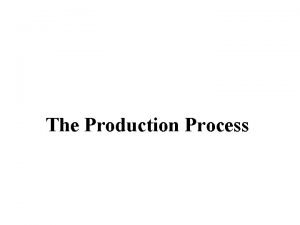THE CES PRODUCTION FUNCTION The function is developed







- Slides: 7

THE CES PRODUCTION FUNCTION

• The function is developed by ARROW, MINHAS, SOLOW in their new famous paper of 1961 • The function consists of three variables Q, C, L and three parameters A, a, and. Q. • The function is Q=[a. C-Q +(1 -a)L-Q]-1/Q. • Here Q=Total output, C=capital, L=labour, A=Efficiency parameter, a=distribution parameter abd Q=substitution parameter

PROPERTIES • Homogenous of degree one. An increase in inputs leads to same level of increase in the output A[a(n. C)-Q + (1 -a) (n. L)-Q]-1/Q = A{n-Q[ac-Q+(1 -a)L-Q] }-1/Q (n-Q )-1/Q Q=n. Q. • The CES function exhibits constant returns to scale. • Average and marginal products of inputs are homogenous of degree zero. MPK = a/AQ[Q/C]1+Q and MPL=1 -a/AQ[Q/L]1+Q

• Slope of an isoquant is convex to origin ie; MRTSLK =MPL / MPK =(1 -a)/a [C/L]1+Q. • Parameter “Q” (theta) in the CES Production function determines the elasticity of substitution. Elasticity of substitution = 1/1+Q. • The isoquants for the CESProduction function range from right angles to streight lines as the elasticity of substitution ranges from “ 0 to a”. • The Marginal Product of an input increases when other inputs increases. • The CES Production function is used to prove Eulers Theorem.

MERITS • The CES function is more general. • It covers all type of returns. • Very easy to estimate. • The function takes account of a number of parameters. • It takes account of raw materials among its inputs. • CES function is free from unrealistic assumptions.

LIMITATIONS • The function considers only two inputs. • The distributional parameter or caitalintensity factor coefficient “a” is not dimensionless. • If data are fitted to the CES function, the value of the efficiency parameter”A” cannot be made independent of output or of units of “Q” , ”C” and “L”. • It involves the problem of aggregation of production functions of different firms in the industry.

Despite these limitations the CES Function is useful in its application to prove Euler's theorem, to exhibit constant returns to scale , to show that average and marginal products of inputs are homogenous of degree zero and to determine the elasticity of substitution.





